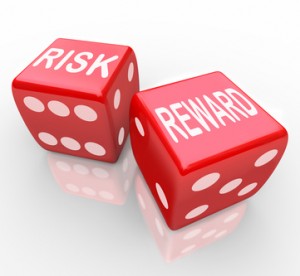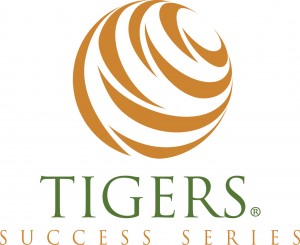
But without the element of risk, there would be no new discoveries, innovation, or progress – especially in the world of business. Without risk, organizations would still be at the Neanderthal stage of economic productivity and success. With the recent recession, layoffs, and cutbacks, it’s no wonder employees and CEOs alike are very adverse to risk. They prefer instead to go with the status quo, but at what cost?
Status quo means doing business as usual, but with the new economic environment that model fails to pave the way for new innovations and improved systems. Morale is poor, employees are disengaged, and organizational bottom lines may or may not be showing symptoms of recovery.
So what are some ways to reduce the consequences of risk? Team work, collaboration and powerful problem solving that include employee opinions in the formula. When insightful leaders encourage open communication, good communication with emotionally intelligent responses, and problem solving in the workplace, employees are more creative, willing to “take a risk” with higher levels of commitment and accountability and think outside the box for solutions.
Here are some easy to employ techniques that remove the stigma against risk and encourage innovation for business success:
- Focused Team building exercises – Team activities and exercises bring employees and leaders together to strengthen trust and cooperation. When the elements of fear and distrust are minimized in corporate culture, new ideas and ways of conducting business follow. Businesses become proactive instead of reactive and exhibit more agility when it comes to adjusting within a changing economic climate.
Examples of productive team building exercises include building good group norms for behavior and developing group processes such as problem solving, conflict resolution, and communication prior to launching a project management planning schedule. Projects frequently fail not because goals were not properly identified. They fail because of shabby efforts in developing sound group norms and process which include how we deal with mistakes.
- Leading by example: This is where the old saying “Do as I say, not as I do” should fade away. According to Julie Winkle Giulioni , author of Help Them Grow or Watch Them Go: Career Conversations Employees Want, “When employees see their own managers trying new things, stepping out of their comfort zones, and taking risks in service of the business, it sends a strong message about what is valued. When leaders are transparent about the outcomes of these acts – both good and bad – it begins to create the conditions for others to do the same.”
For example, recently I commented on a blog post by Inc. Magazine with regard to how Bosses should respond to some of the employee comments that they cringe when they hear. One of them was, “So, how do you want me to do this?” The recommended response was, “You figure it out.” I could not disagree more when it comes to confronting risk. Here’s why.
The employee’s hesitancy to plunge into work without confirmation is a responsive risk issue. They are fearful of repercussions if what they do is off target or wrong. Instead, a good response from the Boss is, “Here is the end goal of what it is we want to accomplish. Tell me your thoughts on how you would achieve this?”
What comes back to the Boss is the employee’s approach. If the approach is off target it can be corrected then and there before the employee plunges into the work. If it is on target, the Bosses response could be, “Sounds good to me. Make it happen.”
Two things happen in this lead by example scenario:
One, the Boss gets to see how the employee thinks and plans resulting in coaching on the go that builds employee confidence and skills.
Two, the employee gets to see that the Boss is invested in their success. It builds the relationship and trust.
- Training: In order to perform their job functions correctly and without hesitancy, employees should be armed with knowledge and tools in order to build their risk tolerance. Without proper training, employees are fearful of losing their jobs or being ridiculed by teammates for inadequacies that are not their fault.
Executives who continue to put training on the back burner during economic crunches and in times to come fail in workforce development and in their systems refinement. From a risk standpoint, these executives fail. It is too high a risk to continue to ignore proper employee training and development.
- Leadership support: Employees and teams that collaboratively go out on a limb to find innovative solutions and build adjustments and check points into their planning do not fear reprimands or finger pointing from upper management. Providing guidelines and allowing employees to discuss and explore different approaches in a safe environment combats fear of risk-taking. It should be dually noted that consistency in management’s response to risk is a key component to success.
For example, I still subscribe to the Deming 80-20 rule where 80% of mistakes and failure come from systems and not from the mistakes people make. A good case study is Toyota and their floor safety system where actions to avoid were noted in red print. The actions to do were in green print. One employee continued to get things confused and was close to being fired. Management’s consistency to refuse to fire employees before systems were evaluated resulted in confronting system-wide employee color blindness issues. Of their employed population, a high number of male employees were indeed color blind. This resulting in changing the floor safety system colors from red and green to yellow and blue.
No more problems occurred and it boosted efficiency in other areas of the company as well.
- Risk resolution: As I state in my book, Engagement, Retention & Growth, “Employees are risk resolving. This means they work to solve problems by bringing diverse perspectives to the table. Planning produces accountability. It is understood that mistakes happen. When they do, the mistakes are analyzed down to the root cause so issues are resolved.” In other words, when employees partner with others and commit to good group norms and process, it creates the safety net needed to venture into uncharted waters.
Risk and risk resolution are essential components for thriving businesses and organizations. Without it, new products are not developed, progress is stagnated, mistakes are repeated and ingenuity is doused. It is up to leaders to remove fear and anxiety from the workplace culture and encourage talented teams of employees to shoulder risk made possible through teamwork, good group process and cooperation.
Business coaches and training consultants looking for proven resources to facilitate risk-taking and innovation in the workplace, consider certification as a licensed TIGERS facilitator. We are training dynamic business coaches, internal and external trainers, facilitators, educators, and leadership consultants who are searching for proven resources and solutions to take their organization or consulting business to the next level. With opportunities to “brainstorm” with like-minded thought leaders, utilize the proven TIGERS Team Wheel and an arsenal of team-building resource tools, the “royalty free” Engagement, Retention & Growth is the solution for the right candidates. Use proven, research-based resources and assessment tools that reveal behavioral issues, sources of conflict, skill sets, strengths, and weaknesses within a team or organization. If you are a consultant or trainer and fit this scenario, I would like to hear from you.
Copyright TIGERS Success Series, Inc. By Dianne Crampton
TIGERS Success Series is a team development consultancy based on 6 core principles that anchor high performance team dynamics. These principles are trust, interdependence, genuineness, empathy, risk and success. TIGERS offers licensing and certification to team building trainers and consultants interested in expanding their practice to serve organizational leaders from the break room to the boardroom. To receive our complimentary e-newsletter and the complimentary TIGERS Den resource community learn more here.
